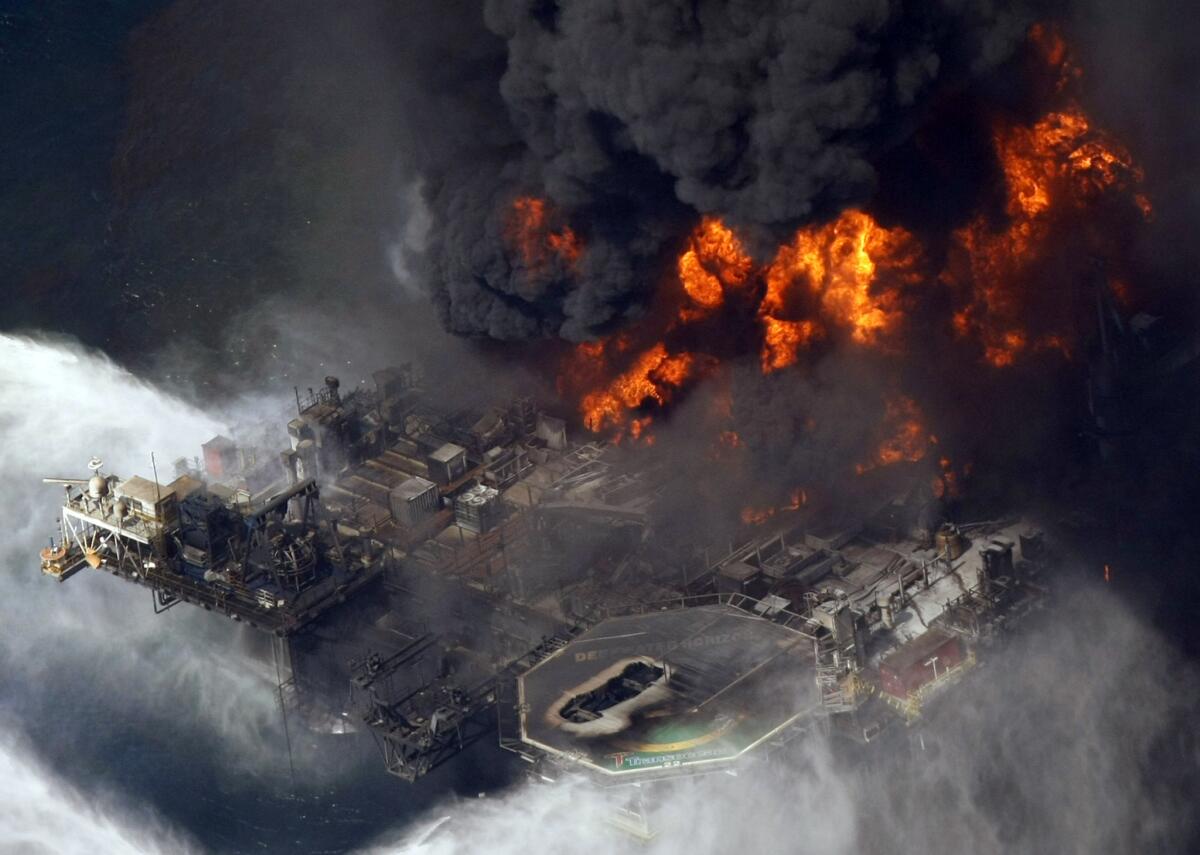Gulf of Mexico oil sheen traced to wreckage of Deepwater Horizon rig

When oil sheen appeared on the sea surface last fall not far from the site of the Deepwater Horizon disaster in the Gulf of Mexico, authorities wanted to know where it was coming from.
Was BP’s sealed Macondo well -- the source of the biggest offshore oil spill in U.S. history -- leaking? Was oil escaping from the 80-ton, steel containment dome abandoned on the gulf floor after it was used in a failed attempt to control the blown-out well? Or was something else the source?
Testing revealed that the oil slicks matched the Macondo crude. But seabed surveys showed the well cap was in good shape. Leaks were detected in the 39-foot-tall containment dome -- which contains an unknown quantity of oil -- but the sheen remained after the leaks were plugged.
Chemical sleuthing by scientists from the Woods Hole Oceanographic Institution and UC Santa Barbara ultimately pointed to the deep sea wreckage of the Deepwater Horizon drilling rig, which exploded when the well blew out in April 2010, killing 11 workers.
Using a patented technique to test the sheen samples, researchers identified industrial lubricants used in the drilling process. While no drilling fluids were detected in samples from the dome leaks, samples from rig debris collected three years ago matched.
In a paper published online this week in the journal Environmental Science & Technology, the scientists concluded the likely sources of the slicks were rig tanks that held a mixture of drilling fluids and oil. As the 600-barrel tanks corrode on the gulf floor, the oil slowly escapes.
“We were able to resolve what was going on,” and informed federal authorities and BP of their findings as the research evolved, said Dave Valentine, a UC Santa Barbara professor of microbial geochemistry and a co-author of the paper.
The thin surface sheen, about two miles long and a few hundred feet wide, appeared for a number of months starting last September. It has not been seen recently but Valentine said he would not be surprised if it reappeared, given the source.
Landing or surfacing in the oil could be a problem for sea birds or mammals, but Valentine said the wreck leakage was comparable to one of the gulf’s many natural oil seeps. “I hesitate to say it’s not a problem. But there’s not a major chronic concern for something of this magnitude.”
The ability to trace drilling fluid compounds should prove helpful in the future, he added. “There is very little known about the fate and the impact of drilling fluids released into the environment. This opens up an avenue to study” that, he said.







